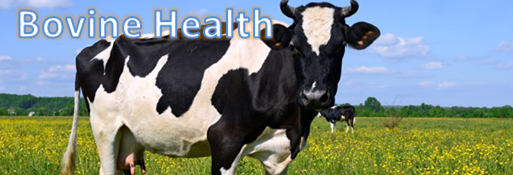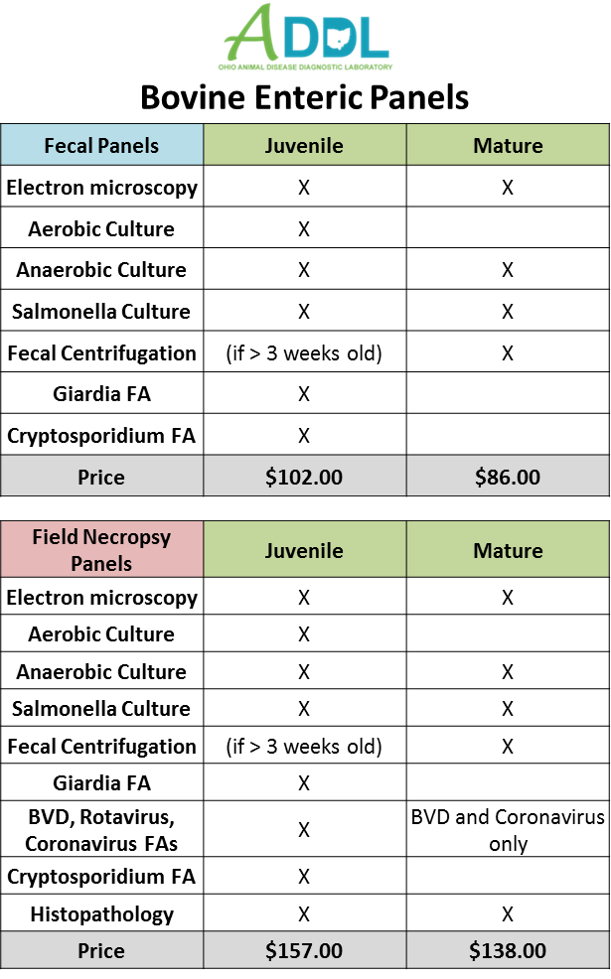 New strain of canine distemper virus detected in North America
Sandy Blackford, BS, RVT, ADDL Virology Section Scientist
Canine distemper virus (CDV) is a highly contagious disease (also known as Hardpad Disease) affecting Canids, Mustelids and Procyonids and is characterized by fever, GI and respiratory signs, thickening of the nasal planum and/or foot pads and neurologic disease. CDV disease may be mild or serious, leading to grand mal seizures and subsequent death. Recently, a new CDV Asia-1 has been identified by Cornell University’s Animal Health Diagnostic Center and was discovered for the first time in North America in a sick rescue dog that was euthanized.
The CDV vaccine may offer immunologic protection against the Asia-1 strain. In addition to the Asia-1 strain, a wild-type strain of CDV has been previously detected in the domestic dog population in Ohio by ADDL. Several tests are available at ADDL for CDV diagnosis:
-
CDV IFA (indirect fluorescent antibody) testing on serum differentiates vaccine (IgG) and field exposure (IgM).
-
CDV FA (direct fluorescent antibody) testing on brain, duodenum, lung, lymph node, urinary bladder, stomach and conjunctival swab.
-
Molecular assays based on Real-time PCR or sequence analysis are also available upon request.
Keep samples refrigerated and ship on ice. Please call ADDL at 614-728-6220 with further questions.
 Annual reminder to vaccinate horses - WNV & EEE
Dr. Jeff Hayes, DVM, MS, ADDL Pathology Section Head
The Ohio Department of Agriculture Division of Animal Health encourages horse owners to vaccinate their animals to protect them against both west Nile virus (WNV) and Eastern equine encephalitis (EEE) virus. Both viruses are transmitted by mosquitoes. The ADDL strongly supports veterinarians in reminding the public that the most effective way to prevent these two diseases in horses is to have the animals vaccinated by a licensed veterinarian. Additional useful actions to control the mosquito population include eliminating standing water in tires, water baths, and other sources.
At this time of year, there is still time for a horse’s immunity to build before active mosquito season gets into full swing. A two-shot vaccination series within a three- to six-week period may be needed if a horse has not been vaccinated in the past year. Planning ahead may prevent serious disease, and even death, in horses. In 2018, a record 50 horses were documented as infected with west Nile virus, and 38% (19 of 50 cases) either died spontaneously or were euthanized due to the severity of disease.
The ADDL continues to provide testing for both of these viruses by serology and PCR analysis of tissues. The ADDL works together with NVSL to provide serologic testing of blood samples. Please call the ADDL for more information at 614-728-6220, or visit our website test and fees search (pages 18 and 45).
 Annual reminder about hypomagnesemia
Dr. David Newman, DVM, ADDL Pathologist
Hypomagnesemia (often referred to as grass tetany, grass staggers, spring tetany, or lactation tetany) is magnesium (Mg) deficiency that occurs most often in the spring or fall when pastures are growing fastest that are high in potassium and nitrogen and low in Mg and sodium. It is most common in grazing lactating ruminants because milk production removes Mg uptake. Hypomagnesemia is a complex metabolic disturbance involving decreased blood and cerebrospinal fluid Mg levels that if untreated can lead to hyperexcitability, muscle spasms, convulsions, and death.
In the live animal diagnosis is usually confirmed by response, followed by confirmation of hypomagnesemia in blood samples collected prior to treatment. Tetany usually occurs when plasma total Mg is <1.2 mg/dL (0.5 mmol/L) in cattle and <0.5 mg/dL (0.2 mmol/L) in sheep. Mg concentrations <1.8 mg/dL (0.75 mmol/L) in the vitreous humor of the eye removed from animals within 24 hours after death are indicative of hypomagnesemia. Common differentials for hypomagnesemia include but are not limited to: hypocalcemia, encephalitis, listeriosis, and ketosis. Analysis of blood collected can be done at most veterinary clinical pathology laboratories. If analysis of a dead animal for hypomagnesemia is desired, remove the entire eye and freeze it, followed by submission to the ADDL using appropriate shipping procedures. Testing the vitreous humor for magnesium levels can be arranged at a referral laboratory.
Alternatively, an entire dead animal can be submitted to the ADDL for necropsy ($90 plus $8 accession fee) to determine the cause of death. Often, hypomagnesemia is a diagnosis of exclusion as postmortem changes are usually unremarkable and nonspecific.
Bovine Enteric Diagnostic Panels
Dr. Jeff Hayes, DVM, MS, ADDL Pathology Section Head
Melanie Prarat, MS, ADDL Virology Section Researcher
Diarrhea problems in cattle of all ages are common presentations to the ADDL. Diagnostic panels have been developed to investigate the most common causes of enteritis conditions for neonatal/juvenile animals and for adults. In addition, for each age group, there are panels for feces only (live animal) and for chilled and formalin-fixed tissues (field necropsy samples). For field necropsy cases of all ages, preferred chilled samples are ligated loops of ileum and colon, mesenteric lymph node, liver, spleen, and feces or cecal contents. Preferred histopathology samples include formalin-fixed sections of rumen, abomasum, duodenum, jejunum, ileum, cecum, spiral colon, liver and mesenteric lymph node. Remember, a 10:1 volume of formalin to tissue mass is recommended for effective tissue fixation.
For calves generally under 3 weeks of age, tests for both feces only and field necropsy panels include bacterial cultures (aerobic, anaerobic and Salmonella enrichment), immunofluorescent testing of fecal smears for Cryptosporidium oocysts and Giardia cysts, and electron microscopy of feces to detect viral particles. For field necropsy cases, additional tests include fluorescent antibody testing of frozen ileum sections to detect antigens of BVD virus, bovine coronavirus and bovine rotavirus.
Note that there are additional costs for antimicrobial susceptibility testing and for virulence factor testing of Clostridium perfringens and E. coli isolates by multiplex PCR assays. E. coli virulence factor testing is most useful for calves less than 7 days of age.
For adult cattle, tests for acute enteritis conditions include anaerobic and Salmonella enrichment cultures, fecal centrifugation for parasite ova and oocysts, and electron microscopy for coronavirus particle detection in feces. Fluorescent antibody testing of frozen ileum sections for BVD and bovine coronavirus antigen is done for field necropsy cases, and preferred histopathology samples are as listed above.

The Ohio ADDL will be closed on Monday, May 27th, 2019 in observance of Memorial Day.
For additional information and resources, please visit our website. If you need to contact us regarding an urgent matter, please use our after hours phone number: 888-456-3405.
ADDL Test and Fees Search
|